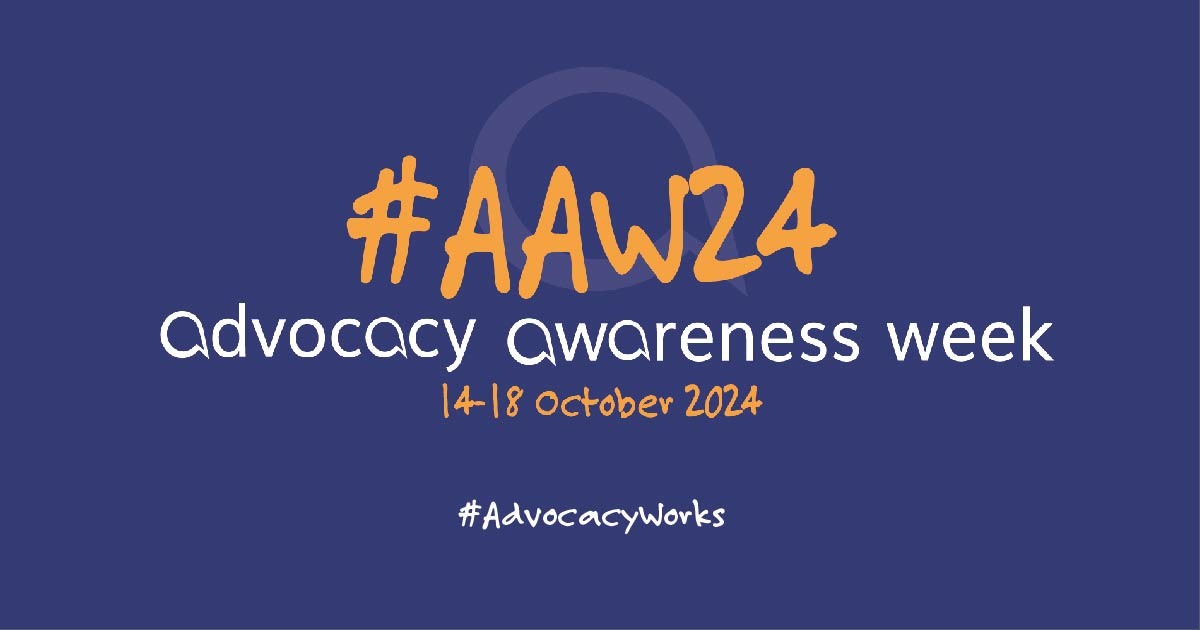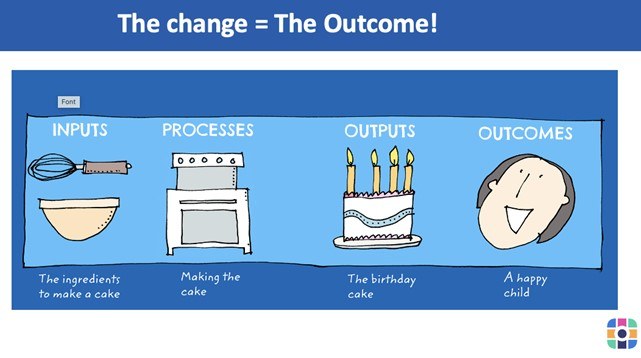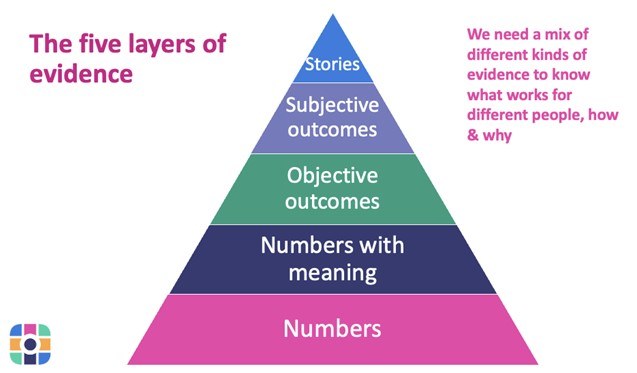Blog: Welcome to Advocacy Awareness Week 2024
In this short piece advocacy programme lead, Gail Petty, introduces Advocacy Awareness Week and how we can demonstrate impact in advocacy services.
A week where we all get celebrate advocacy in all its wonderful forms. This year we are celebrating:
- the impact of advocacy,
- the difference that advocacy makes, and
- how advocacy can create changes in people's lives.

We know from our work with advocacy organisations and self-advocates that good, independent advocacy is transformative. This week we’re so excited that we will be getting to hear and share stories of where advocacy has made a difference to people and how they have been able to live their lives. We hope it helps more people understand why advocacy is so hugely important and better understand the impact of advocacy.
I was at an event recently and was reminded how easy it can be to forget the core role of advocacy:
- enabling people to have a voice and be heard,
- have rights that are respected and upheld,
- support to navigate and access services and achieving equality and social justice.
It’s easy to get side tracked by all sorts of things:
- different funding agreements,
- ‘what’s in the contract’,
- different models of statutory advocacy, or
- demonstrating that a goal has been achieved.
When actually the power and impact of advocacy is often in the relationship of standing shoulder to shoulder with someone, listening to what they want, understanding how they feel, supporting them to say what they want and ensuring others are listening and responding.
The Advocacy Charter
As a sector, in England and Wales, we codeveloped our working definition of advocacy back in the late 1990s early 2000s and this was enshrined in the first Action for Advocacy Charter back in 2002.
The definition in the advocacy charter we still use today remains pretty much the same.
Advocacy is taking action to support people to say what they want, secure their rights, pursue and represent their interests and obtain services they need. Advocacy providers and advocates work in partnership with the people they support and take their side, promoting social inclusion, equality and social justice.
In Scotland a similar definition is used: independent advocacy is about speaking up for, and standing alongside individuals or groups, and not being influenced by the views of others. Fundamentally it is about everyone having the right to a voice: addressing barriers and imbalances of power, and ensuring that an individual’s rights are recognised, respected and secured.
Independent advocacy supports people to navigate systems and acts as a catalyst for change in a situation. Independent advocacy can have a preventative role and stop situations from escalating, and it can help individuals and groups being supported to develop the skills, confidence and understanding to advocate for themselves.
Impact of advocacy
So, when we think about the impact of advocacy, we must surely be thinking about how advocacy supports people to achieve these kinds of things:
- Having a voice and being heard, being able to say what I want and support to speak up.
- Having support to take part in meetings and discussions about me.
- Having someone to represent me, speak up for me when I need it and someone to be on my side.
- Having my rights recognised and upheld – my human rights and my rights under other laws and conventions.
- Having someone understand me, what I want and need and what I want to change or stay the same.
- Help to access support and/or services that I want or need.
- Help to be included; in decisions about me, in the place where I live, in the activities I do etc.
- Help to achieve equality, ensuring other make the adjustments I need to access to support and be included.
- Help to achieve social justice and address imbalances of power.
That’s all pretty powerful stuff! And it’s what advocacy is all about.
How do you demonstrate and evidence impact?
We know that it can sometimes be hard to show how impactful advocacy is. Advocacy organisations are really busy supporting as many people as they can and with contract monitoring not always focused on outcomes and impact, it’s easy to get caught up in the numbers, inputs and outputs and forget that there are other ways to show how advocacy makes a difference.
Colleagues from NDTi have been helping organisations think about how they can demonstrate impact as we have run up to advocacy awareness week, and you can watch back the webinars about working with peer evaluators and about how stories can be a powerful tool to demonstrate change.
Two slides from those sessions have really stuck with me. And the first one is about outcomes – and cake! I thought this was just a brilliant example of explaining outcomes.

For loads of us, me included, I thought the outcome would be the cake – but of course it’s not the cake! It’s the happy child, feelings of connection, time with friends and family, a full tummy, the memories of a great party and so on. All these things are the outcomes from the cake. So, what does that mean for us in advocacy? If advocacy is the cake, what outcomes do we achieve?
I’m back to my list above – being heard, having more choice and control in my life, having my rights respected etc. But, it could be so many other things too: more confidence to speak up, a home of my own, a life with less restrictions in it, more chances to do the things I love and see the people that are important to me, the support I need to live a good life…
So how can we get better at showing the impact the advocacy can have? On to my second slide! At NDTI we often talk about the five layers of evidence and the fact that we need these different approaches, tools and layers to help us build a fuller picture of impact.
This approach to evaluating outcomes was designed by Dave Burnham, Head of Information at Lancashire County Council. This holistic approach to measurement is recognised by the Department of Health as being appropriate for capturing and assessing change relating to the personalisation agenda. NDTi has used it for a range of development and evaluation purposes.

Any one of these layers on their own isn’t enough. Have a think about your monitoring reports, do you have all five layers of evidence? Which ones are missing and how can you add them in? (watch the webinars for some hints and tips!)
During the week we will be sharing amazing blogs, videos, articles, stories and more to help us think about how we can get better at demonstrating impact:
- by using data,
- by better capturing outcomes, and of course
- by helping people tell their stories to understand how advocacy makes a difference.
Get involved
There will be the usual daily social media posts from NDTi and from colleagues across the advocacy community, all of which show and celebrate the impact of advocacy.
You can follow and join in the conversation on social media using the hashtags
#AAW24
#AdvocacyWorks
#SelfAdvocacyWorks
Don’t forget you can also access a load of brilliant free resources, in English and Welsh, to share and personalise to your own organisation on the Advocacy Awareness Week resources page.